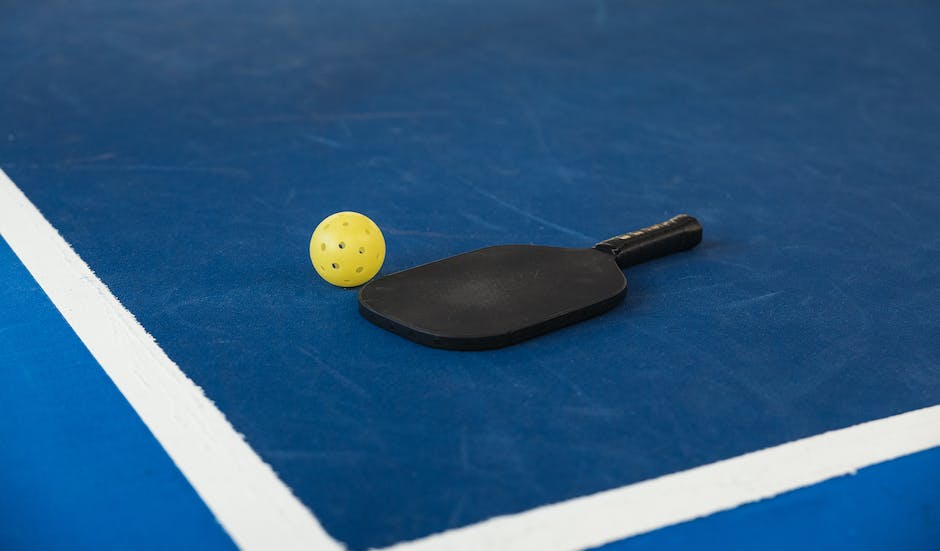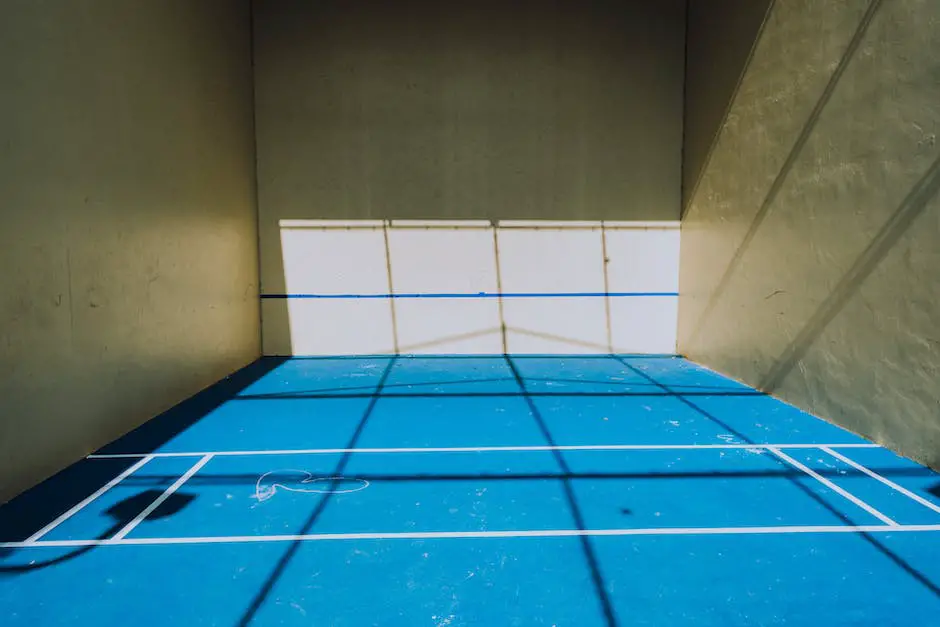Unlocking a world of exciting sporting engagement, pickleball leagues have been gaining considerable popularity with individuals of all ages. Offering a uniquely fun blend of badminton, tennis, and table tennis, pickleball is a sport designed for everyone’s enjoyment, regardless of their experience or expertise level. As the sport continues to reach wider audiences, understanding the intricacies of pickleball becomes an absolute necessity. This knowledge spans a range of topics from understanding the basic fundamentals of the game and its league structure to in-depth exploration of league rules and getting involved in pickleball leagues. Embracing the challenges and fun of pickleball presents an opportunity to become part of a vibrant, passionate community that thrives on fostering healthy competition, camaraderie, and sport reverence.
Understanding the Basics of Pickleball and Its Leagues
Understanding the Basics of Pickleball
Pickleball is a paddle sport that combines elements of tennis, badminton, and table tennis. It was invented in 1965 on Bainbridge Island, a short ferry ride from Seattle, Washington, by three dads – Joel Pritchard, Bill Bell, and Barney McCallum who were summering there with their families. The objective was to create a game that the whole family could play together.
Today, it has grown in leaps and bounds in popularity, with over 3 million players in the United States alone. This ballooning popularity is mirrored worldwide, with countries from Japan to Canada seeing a surge in pickleball interest.
Anatomy of a Pickleball Game
In pickleball, players use special paddles to hit a plastic ball over a net similar to a tennis net but slightly lower. The game can be played in singles or doubles format, on a badminton-sized court with specific modifications. One key feature of pickleball is the ‘kitchen’- a seven-foot zone on either side of the net where volleying (hitting the ball before it bounces) is not permitted. The first side scoring 11 points and leading by at least 2 points wins the game.
Structure and Organization of Pickleball Leagues
Pickleball leagues are majorly operated at a local level, often through community centers, sports facilities, or through dedicated pickleball clubs. However, there also exist national and state-level bodies like the USA Pickleball Association (USAPA) that oversee and organize larger tournaments and championships.
The structure of leagues varies but often includes a regular schedule of matches, usually over several weeks or months, culminating in a playoff or championship. Players or teams accumulate points based on their win-loss record, and standings are used to determine who advances to the playoffs.
Additionally, leagues often are categorized by skill level, ranging from beginners to advanced players. This skill level is usually self-assessed, although some leagues and tournaments do use a rating system similar to the Elo system in chess, to ensure balanced and fair competition.
Levels of Competition in Pickleball Leagues
A major draw of pickleball for many is the level of competition available. From social, casual play to highly competitive tournaments, there’s something in pickleball for everyone. Many local leagues host relaxed, social competitions where the focus is more on having fun and meeting people than on winning.
On the other hand, at the state and national level, competitive pickleball is a serious endeavour. Tournaments such as the USAPA National Championships in Indian Wells, California, or the US Open Pickleball Championship in Naples, Florida, attract top players from around the country and even the world.
To further cater to the varying skill levels, leagues like the Amateur Athletic Union (AAU), and the Pickleball Global Cup, among others, offer a range of skill divisions, from novice to professional level, ensuring a suitable competitive environment for all.
Pickleball is an intriguing sport that continues to experience rapid growth. It invites participation from players of all ages, abilities, and levels of competitive spirit. It’s the straightforward rules and engaging gameplay, paired with the community-focused environment created by leagues, that have led to pickleball leagues gaining increased popularity and participation.

The Rules and Regulations of Pickleball Leagues
Grasping the Court Dimensions in Pickleball Leagues
Designed similarly to a doubles badminton court, pickleball courts are 20 feet wide and 44 feet long. A net separates the court into two identical rectangular halves. Crucial to the game’s strategy is a 7-foot non-volley zone, or the “kitchen”, which is located directly next to the net in each half of the court. Additionally, each team’s half of the court is split into right and left service areas, further driving the strategic nature of the game.
Comprehending the Scoring System in Pickleball Leagues
In pickleball, the scoring system is unique and can initially be tricky to understand. Games are typically played to 11, 15, or 21 points, and players must win by at least two points. Only the serving team can score points. Service alternates between teams and between players within a team. When the serving team loses a point, the other team gets the opportunity to serve and potentially score points. In doubles play, each player of the team serves before the serve passes to the opposing team.
Observing Proper Player Conduct in Pickleball
Player conduct is a crucial part of league play. Players are expected to understand and abide by the rules, demonstrate sportsmanship, respect officials and opponents, and refrain from unsporting conduct. This can include behaviors such as abusive language, racket abuse, and deliberate distraction. It’s important to note that unsporting conduct consequences can range from warnings to penalties and even disqualifications.
Recognizing Equipment Specifications for Pickleball
For Pickleball, the balls used must be specifically designed for the sport, made of durable molded material with a smooth surface, and contain several round holes. These are typically yellow, white, or green, but this can vary between leagues. The paddles can be made of different materials including wood, graphite, or composite, but should not have features that allow the player to impart additional spin on the ball. In terms of size, a paddle cannot exceed 24 inches in total length.
Navigate Through Pickleball Leagues’ Game Regulation
Pickleball leagues worldwide generally operate under the watchful eyes of certified referees, ensuring that all players adhere to the rules of the game. They handle everything from starting the match, tracking and declaring the score to making line calls, enforcing rules, and possibly assigning faults and penalties. Casual and recreational leagues may resort to self-refereeing, championing an honor system. On the other hand, professional or fiercely competitive leagues invariably employ the services of certified referees to maintain game flow and assure unbiased gameplay.

Getting Involved in Pickleball Leagues
Exploring Local Pickleball Leagues
Embarking on the journey of discovering a local pickleball league near you can be as simple as leveraging the power of a web search. The majority of towns and cities within the United States host pickleball leagues, more often than not, these are administered via community centers, parks and recreation departments, and local educational institutions. Inputting “pickleball leagues near me” should generate many results. Furthermore, websites such as USA Pickleball and Pickleball Central serve as comprehensive databases that encompass pickleball clubs and leagues nationwide, providing invaluable resources.
Deciding on the Appropriate Competition Level
Before you sign up, it’s important to understand your skill level and pick the appropriate competition. Most leagues categorize their divisions based on skill level. Beginners should start with novice or beginner leagues. Intermediate and advanced players can look for leagues appropriate for their experience and skill level. It is advisable to start at a comfortable level and progressively move up as you improve your game.
Preparing for League Participation
Joining a pickleball league means you’ll be playing regularly, often on a weekly basis, so it’s important to be adequately prepared. Regular exercise and strength training can help improve your fitness level, which is key in a sport like pickleball that requires agility, speed, and endurance. Understanding the rules of the game is also crucial. Consider attending a few pickleball training sessions or clinics before joining a league, it will help you get familiar with the gameplay, rules, and strategies.
Benefits of Joining a Pickleball League
Participating in a pickleball league has numerous benefits beyond just enhancing your playing skills. It introduces you to a community of players who share the same interest. This provides opportunities for making new friends, networking, and socializing. Additionally, regular participation in the league games encourages physical fitness, mental agility, and overall well-being. It’s also a great stress buster and a fun way to spend time outdoors.
The Community Aspect of Pickleball
Pickleball isn’t just a sport—it’s a community. Many players rave about the camaraderie and friendships they’ve made on the pickleball court. Leagues often host social events in addition to games, further fostering a sense of community. You’ll find people of all ages and walks of life, united by their love for the game.
Identifying Pickleball Leagues in Your Community
In addition to online searches and using websites like USA Pickleball, consider asking around in your community. Local fitness centers, senior centers, or community recreation providers can be great places to ask about local leagues. You could also use social media platforms to find local pickleball groups. Many pickleball leagues and clubs have Facebook pages or Instagram accounts.
The image of people playing pickleball
Finally, be proactive and reach out to the specific leagues or clubs that you’re interested in.
They can provide you with all the details about how to join, what you’ll need, and when they play, making your first step into the world of pickleball leagues an easy one.

Indeed, pickleball, with its unique blend of sports influences and league dynamics, offers a rich pathway to engagement, exercise, and community bonding. It is a playful and challenging sport that offers numerous benefits for participants from diverse walks of life. As you grow in your understanding of the sport—its rules, structure, and how to get involved—your appreciation will inevitably deepen. The decision to delve deeper into the world of pickleball leagues opens up avenues for personal growth, skill enhancement, and the creation of rewarding friendships. Armed with this knowledge, you’ll be well equipped to step out and become part of the vibrant and welcoming pickleball community, a journey that promises both enjoyment and personal growth.